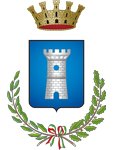
Porto Torres
Turris Libisonis
Porto Torres is located atop the old Roman city of Turris Libisonis, near the mouth of the Rio Mannu, in the heart of the Gulf of Asinara. Since the 1st century B.C., it had been a Roman colony, and it was the only one of the properties between the Republic and the Empire to be inhabited by Roman citizens: it bore the name Iulia, which was associated with the personalities Caesar and Octavian. Various urban restorations occurred throughout the city’s long Roman reign, including the construction of a road network, three thermal baths, an aqueduct, and the establishment of a port that maintained trading links with Ostia.
The Palace of King Barbaro, a public bath building, has a noteworthy importance in the archaeological region adjacent to the Antiquarium. The name is wrongly associated with the late Passion of the Turretan Martyrs, which commemorates a Sardinian governor named Barbaro, who is claimed to have ordered the beheading of soldiers Gavino, Proto, and Gianuario.
When Angioy set sail on the 16th of June 1796 with his most loyal associates to avoid capture and the impending horrible repression, Porto Torres was a little community of a few hundred people, a faded recollection of a magnificent past. During the rule of Sassari as Alter Nos, it was Angioy himself who worked for the functional repair of the now deteriorated port, following the lines that Charles Emmanuel III had previously proposed a few decades before. The Royalist party picked up on this awareness of Porto Torres’ strategic importance as a result of the recurring tales spread by Angioy’s partisans about an impending landing of the Alter Nos accompanied by armed hosts.
Porto Torres had an urban network divided into two nuclei at the time of the Sardinian Revolution: the one around the basilica of S. Gavino, inhabited by Bainzini, Sardinian peasants and shepherds, and the port area, inhabited by navicularii, Genoese, Neapolitans, and Corsicans devoted to maritime activities. Salvatore Tramma, one of the latter, was involved in Angioyan matters.
We can envision the port of Torres bustling with rowing and sailing boats, such as feluccas, small vessels that could normally accommodate roughly ten people and a crew of two, between the eighteenth and nineteenth centuries. The feluccas could sail with one or two lateen sails and a mast sloping towards the bow; because of this, they were suitable for cruising below the coast.
From Porto Torres to Europe
Angioy embarked for Genoa on June 17, 1796, and ultimately settled in Livorno.
Angioy embarked for Genoa on June 17, 1796, and ultimately settled in Livorno. He tried everything to reach Napoleon and persuade him to embrace the Sardinian cause: he met the great Corsican at Castiglione delle Stiviere (Mn), which he besieged at the end of July 1796.
He spoke with French government representatives while in Milan, but his friends could only keep him afloat by blocking the Savoy government’s demand that he be taken into custody. Being a skilled politician, Angioy chose to take the diplomatic road and took the “justification” of his acts to Turin after seeing that there would be no positive conclusion for the Sardinian cause.
The Turretan Martyrs' Basilica
The Monte Agellu region, which was a component of the southern necropolis of the Roman settlement of Turris Libisonis, is home to the Romanesque church of San Gavino. The church was built in the 11th century at the request of Judge Comita of Torres, who, after being cured of leprosy, realised what Gavino had asked him in a dream: to build a new basilica and bring the martyrs’ relics to the new church, which was designated to honour the saints and house the new bishop’s seat. Porto Torres was as the episcopal See from 484 to 1441, when the Turritan bishop relocated to Sassari.
The Romanesque church is located between two courtyards, Atrio Comita and Atrio Metropoli, and over two older churches from the 5th and 6th centuries.
With dimensions of 58 by 19 metres, the Basilica di San Gavino is Sardinia’s largest Romanesque structure and the only one with two facing apses. The interior of the limestone-built structure has three naves divided by arcades on columns with exquisitely remoulded marble capitals that were sculpted during the Roman era.
The millennium veneration of the local martyrs Gavino, Proto, and Gianuario makes the sanctuary a significant site for devotions.
The three saints' relics were found here at the beginning of the 17th century and were subsequently deposited in the crypt excavated especially to hold them.
Salvatore Tramma
Undoubtedly, among the most enigmatic characters of the Angioyan exodus.
His story is presented in the acts of the lengthy trial against the revolutionary wave. He is a native of Naples. According to the documents, Tramma landed in Torres on June 26, 1796, and was immediately questioned by Carlo Cugia, the Commander of the Piazza. When questioned, he revealed that ten days before, after arriving in his felucca, he was assaulted by a big number of armed people, forcing him to gain possession of another boat that was tethered nearby. It was boarded by eleven Sardinians and maybe eighteen Frenchmen.
Among them were the lawyer Gioachino Mundula and Don Giommaria Angioy, who arrived on the Peninsula on a ‘Caprarese’ boat after the Tramma altered course with its ‘Neapolitan’ felucca, reaching Asinara and returning to Porto Torres. He bemoaned his meagre earnings, claiming to have obtained just “a good hand of 15 scudi” from the fugitives’ company.
Alternatively, Tramma is said to have quietly negotiated a reasonable fee for Angioy and his friends' transportation to the Tyrrhenian coast.
Saint Gavino along the Balai coastline
On the seashore that runs from Porto Torres to Platamona is the church of St. Gavino at Sea.
Constructed atop a seafront bluff of limestone, it is situated near a hypogeum that dates back to Roman and Christian eras. It is thought to have served as the martyrs Gavino, Proto, and Gianuario’s initial resting place. Up until the eleventh century, the three martyrs’ bodies were kept in the Balai caverns.
The building, which dates to the 19th century, has unique architectural features including its arches and barrel vault. It was built using local limestone.
It is difficult to accurately interpret the church’s construction phases due to the numerous modifications, although the current structure is undoubtedly built upon a pre-existing edifice. A tiny entrance behind the altar connects the church to another structure, the purpose of which is still unknown. It was most likely a Roman cistern that was converted into a place of worship during the Middle Ages.
The church is the location of a participating pilgrimage from 3 May to Pentecost, when the wooden sculptures of the martyrs are stored inside. Countless numbers of believers travel from all around the city and nearby villages to this magnificent temple.
Bibliography
– R. Caprara, A. Mastino, V. Mossa, A. Pinna – Porto Torres e il suo volto, Sassari, 1992
– B. Sanna, P. G. Spanu – Porto Torres chiesa di San Gavino a mare di Balai, s.l., s.d.
– V. Del Piano – Giacobini moderati e reazionari in Sardegna. Saggio di un dizionario biografico 1793-1812; mille biografie di protagonisti comprimari e testimoni del periodo rivoluzionario sardo, Cagliari, 1996
Credits
A. Nasone, G. Ruggiu, S. A. Tedde.


